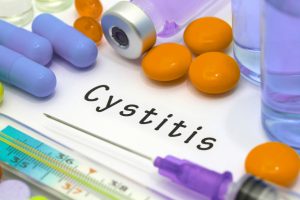
Co-author Robert J. Evans added, “This is the first study to document functional genomic variation based solely on bladder capacity. Interstitial cystitis is notoriously difficult to diagnose. In fact, one report found that it takes the average patient eight years and seeing five doctors to be correctly diagnosed. The identification of biomarkers to improve diagnosis or treatment would be a significant breakthrough for patients and physicians.”
The results of the study identified significant differences in the gene expression in patients with low bladder capacity and both patients with normal bladder capacity or without interstitial cystitis. In patients with low bladder capacity, genes associated with inflammation and immune signaling were turned on, suggesting crucial differences in disease processes.
What is interstitial cystitis?
Interstitial cystitis (painful bladder syndrome) is a condition that affects the bladder and pelvic region. It can lead to pain as well as the need to pee, a lot. Women, in particular, are prone to interstitial cystitis, and unfortunately, this condition doesn’t respond to antibiotics.
There is no cure for interstitial cystitis, and as you can imagine, the need to urinate can really put a damper on one’s daily routine. But there are treatments that might help in reducing the severity of symptoms.
Causes, symptoms, and complications of interstitial cystitis
There is currently no known cause for interstitial cystitis, though some conditions have been linked to the onset of the illness. These conditions include having an autoimmune disorder, being prone to allergies, having a blood vessel disease or defects in the lining of the bladder, and having an abnormal substance in your urine.
Interstitial cystitis can be quite painful. Symptoms include:
- Mild to moderate pain in and around the bladder and pelvis
- Urgency to urinate
- Frequent urination
- Pain experienced during intercourse and menstruation for women
- Pain in the scrotum or penis for men
Complications resulting from interstitial cystitis include reduced bladder capacity, lower quality of life, sexual intimacy problems, and emotional troubles.
Diagnosis and treatment of interstitial cystitis
Diagnosing interstitial cystitis can be difficult, because it mimics a bacterial infection when, in fact, no bacteria are present. (That’s why antibiotics can’t treat it). Multiple tests may be performed to detect interstitial cystitis, including biopsies, urinalysis, and cystoscopy (a procedure that allows to take a peek inside your urinary tract to check for abnormalities).
Although there is no cure for interstitial cystitis, treatments are available. Symptoms may subside based on lifestyle changes such as wearing loose-fitting clothing to avoid added pressure to the bladder, not smoking, reducing stress, exercising, and eating a balanced diet.
Medically speaking, antidepressants, antihistamines, physiotherapy, nerve stimulation, and bladder instillation – which fills the bladder with medicine – are some forms of treatment that may help reduce symptom severity to make life more manageable.
Living with interstitial cystitis
Interstitial cystitis is not a life-threatening condition, but it can definitely alter one’s life. The need for constant visits to the restroom and the anxiety can create some awkward situations. It’s important to create coping mechanisms when you’re living with interstitial cystitis. This can start by reaching out to friends and family. Once they understand your condition, they can provide support.
Another effective way to live with interstitial cystitis is by keeping a bladder journal and noting what some of your bladder triggers are. You can document foods or activities you’ve enjoyed in relation to the presence of your symptoms. This will help you understand how your diet, and even stress level, is affecting your symptoms. You can even bring the journal with you to your appointments to go over with your doctor.
Living with interstitial cystitis is possible, albeit certain lifestyle changes are needed. It may be frustrating at first, as diagnosing this condition is a challenge, but once diagnosed, you can make the necessary adjustments for a healthy, active life.